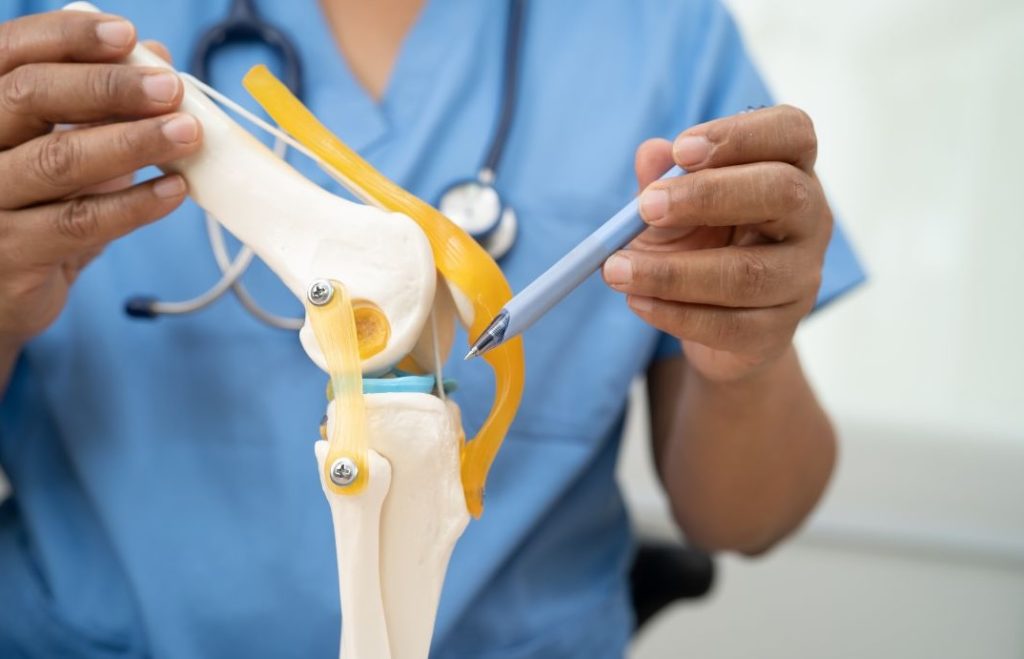If your knees ache after a short walk, or your hips feel stiff getting out of bed, you’re definitely not alone.
Joint pain is surprisingly common, and for many people, body weight might be playing more of a role than they realise. That doesn’t mean it’s the only cause, and it’s not always straightforward. But research does suggest a connection between excess weight and joint stress, particularly in areas like the knees, hips and lower back.
So if you’re exploring what might be behind your discomfort, this could be one factor worth understanding a little better, especially if it’s getting in the way of how you move, rest or enjoy daily life.
Increased Pressure on Weight-Bearing Joints
Joints like the knees, hips and lower back carry much of the body’s weight. So it’s not surprising that joint pain and obesity are often linked. In fact, for every extra stone (around 6.3 kg), researchers suggest there could be up to four times that pressure on the knees during daily movement.
That strain doesn’t just affect the bones. It can also throw off balance, change posture, and affect how muscles work around the joints. Over time, this kind of weight-related joint stress may lead to increased wear, discomfort or reduced flexibility, particularly for those with more sedentary routines.
Even moderate weight changes can influence joint load, and while this won’t apply the same way for everyone, it’s one of the clearest physical links between weight and joint pain. It’s worth considering if you’re feeling discomfort in one or more of your lower joints.
Inflammation Linked to Excess Body Weight

There’s another side to the joint pain weight connection, and it’s not just about physical pressure. Fat cells don’t just sit quietly under the skin; they actually release substances into the body, including inflammatory chemicals called cytokines. When these build up over time, they may lead to low-grade, long-term inflammation throughout the body, including the joints.
Inflammation is the body’s natural response to injury or stress. But when it sticks around too long, it can start to cause problems rather than solve them. That’s often the case in conditions like osteoarthritis and rheumatoid arthritis, where inflammation can worsen joint pain, swelling and stiffness. While these conditions have multiple causes, body weight and inflammation seem to be closely tied in many cases.
This doesn’t mean excess weight causes arthritis. It might influence how joint pain feels and how the body responds. It’s part of a wider picture, where both mechanical stress and inflammation can work together in ways that make symptoms harder to manage.
That’s why the link between inflammation, joint pain, and weight continues to be studied, and why it might be helpful to discuss these patterns with a healthcare professional.
Impact of Weight on Joint Cartilage Wear
Cartilage is the smooth, rubbery tissue that cushions your joints. It helps bones move over one another without friction. It’s essential for comfortable movement, and when it starts to wear down, that’s when many people begin noticing stiffness, grinding, or soreness during daily activities.
Now, if you combine the natural wear that happens with age with the extra pressure from body weight, you can start to see why joint cartilage might wear out faster for some people. That pressure, along with inflammation triggered by fat cells, can reduce cartilage’s ability to protect the joint. Over time, this may increase sensitivity in areas like the knees or lower back.
This is where weight and joint pain often feed into each other: the more wear on the cartilage, the more discomfort you might feel, which can lead to less movement, more strain, and slower recovery. It’s not always about how much weight someone carries, but rather how the joint responds to it over time, especially in cases of body weight and arthritis.
Reduced Mobility Leading to Joint Stiffness
One of the more frustrating parts of joint pain and obesity is how they can feed off each other. When your joints hurt, you naturally move less. But the less you move, the stiffer your joints can become – and the harder it gets to stay active, manage weight, or even maintain muscle strength around the joints.
It’s a cycle that often starts with pain and ends up affecting mobility in all sorts of ways. Muscles that normally support your joints can weaken if they’re not used regularly. That, in turn, can shift more pressure back onto the joints themselves, especially in weight-bearing areas like the knees and hips.
Maintaining movement (even in small, low-impact ways) can be one of the most useful habits for protecting mobility and joint health. It’s not about pushing through pain or hitting the gym hard; far from it. It’s about finding gentle, manageable ways to keep joints working, reduce stiffness, and avoid the spiral into inactivity and discomfort.
Weight-Related Hormonal Effects on Joint Health

Beyond inflammation and pressure, there’s another piece of the puzzle that researchers are starting to look at more closely: hormones. In people with higher body weight, certain hormones, including leptin and inflammatory messengers like cytokines, may behave differently. These hormonal changes could influence how joints respond to stress, inflammation and pain.
Leptin, for example, is mostly known for helping to regulate appetite. But it also appears to affect cartilage health and inflammatory processes in the joints. Similarly, cytokines are involved in immune responses, and elevated levels have been linked to joint discomfort in some studies.
Now, this is still an emerging area of research. It doesn’t mean weight causes joint damage through hormones, and it definitely doesn’t mean everyone is affected the same way. But it does add another layer to understanding weight-related joint stress and how body systems might interact over time.
If you’re unsure what your symptoms mean, or you’re exploring options, it’s always a good idea to contact us and speak with a healthcare professional for personalised advice.
Joint pain can have many causes, but it’s clear that weight and joint pain often share a complex relationship. From mechanical stress to hormonal signals, excess weight may influence how joints feel, move, and respond over time. The good news? Small, sustainable changes in lifestyle or movement habits can sometimes help ease pressure and improve comfort.
And if you’re looking for guidance on managing weight for joint relief, it’s worth exploring your options with a trusted provider. You can start by learning more about weight loss support available through WePrescribe.


